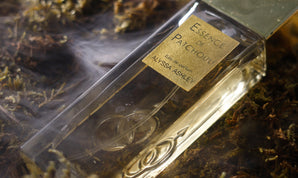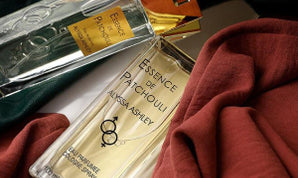February 19th, I celebrate a very important moment in my personal story: the birth of Enrico Donati.
Only very few people know that the Alyssa Ashley brand is tightly and profoundly bound to one of the greatest artists of the 20th Century, who is unfortunately a bit obscure, even in his own homeland.
I have often spoken about my love for art, which derives from the brand’s paternity, and while waiting for what would have been his birthday, I decided to celebrate his art and life by telling you something about his (and therefore also my) story.
I’m sure that names such as Marcel Duchamp, Lucio Fontana or Yves Tanguy will not sound new to you, on the contrary, if you too have a personal interest in the world of art you’ll be familiar with Max Ernst and André Breton too. But have you ever heard of Enrico Donati?
Donati, who died only 13 years ago, never attained the fame he deserved in Europe, or Italy, his homeland, however, in America, he reached success during the golden age of American art, and then was slowly forgotten.
But what makes his (diverse and multifaceted) works so important?
First of all his longevity. Donati, in fact, lived a long life (he died at the age of 99) during which he never abandoned art and his love for it. During his career, spanning over 60 years, he took part in various movements and currents, while always maintaining his own clear and distinctive mark.
If I say Picasso you’ll think about Cubism, if I say Monet you’ll think of Impressionism, if I say Dali you’ll think about Surrealism; and this is because these artists were not only pivotal for these movements but also because in the rare cases when they moved towards other styles, they also decided to stick with them for a longer period of time.
Donati, on the contrary, embraced abstract surrealism, spatialism, informalism, while reinterpreting their guidelines and always in a personal way, following his own independent spirit.
Who was Enrico Donati ?
He was born in Milan, into an affluent family. He inherited his love for music from his father, and the love for painting from his mother; their living room would often turn into an art gallery of the replicas Mrs Donati would make.
His multifaceted genius and his spontaneous and curious approach to artistic forms manifested themselves very early and characterised his whole career.
He graduated in Sociology at the University of Pavia, then followed his passion for music which led him to Paris, he later went to the United States pushed by his love for primitive cultures.
His artistic career was then encouraged by an encounter with the “masters” of the surrealist movement who had flocked to New York during World War II, and who appreciated and supported his artistic expression. André Breton himself, the founder and pioneer of the movement, affirmed:
“I love the paintings of Enrico Donati as I love a night in May”
Putting his appreciation for his colleague and kindred spirit down in black and white, with these words, in the preface to the catalogue that came with Donati’s third exposition in New York.
A careful eye can see the influence of Native American and Inuit primitivism on the introspective art of the earlier years of his career, which gave life to ambiguous and overwhelming sculptures and paintings.
He was proclaimed a member of the surrealist movement, even though he didn’t yearn for it, and even after becoming a member he always kept following his own path while naturally adhering to their aesthetic principles and never conforming to them. He was never afraid to distance himself from the movement’s path, or to let down the public and his colleagues.
After the war everything seemed to change, and everything changed for him too. He disappeared from the artistic scene for two years, and when he came back, in 1948, his canvases would express a new reality, a new approach to shape and colour: clarity had arrived.
Pure and clear colours, shapes would no longer melt into fluids, but would occupy a defined space, on the canvas and in the world.
Was it constructivism? Something similar, but with a Donatian interpretation, obviously.
This new experimentation wouldn’t last long: in 1949 he started experimenting with a technique of painting in movement, called action painting, made famous around the world by Jackson Pollock. Donati would drip tar diluted with pine resin on canvases that were not static (like Pollock’s) but were manipulated to direct the liquid’s path. Action painting would mix with his surrealist past and his works would bare the macabre and reflexive aura of his former movement.
This was his first encounter with matter, which would keep on imposing itself in the future. Tar first, then lint manipulated with glue and tempera to create monochrome material surfaces, called “moonscapes”. He would then, remaining faithful to matter, create the “Fossil” series centered on the concepts of history and primitiveness, discovery and mystery.
Enrico Donati and Alyssa Ashley
I now imagine you might be asking yourselves: in what way is this prolific artist linked to the world of perfumery? The meeting may be defined as serendipitous, but it very probably wasn’t.
Enrico Donati married the last descendant of the Houbigant family, one of the landmark names of artistic perfumery.
This was how he managed to get close to, get to know and fall in love with this world, while understanding its artistic value. He got the chance to take over the company and grapple with this industry, founding the Alyssa Ashley brand in 1968, by putting together his daughter Alyssa’s first name and nickname, that meant “blonde”.
Enrico Donati kept on making all kinds of art, embracing and loving different artistic expressions, tending towards matter and going back to surrealism and to the period that followed closely.
The Alyssa Ashley brand has crossed ages and continents and has reached our time, just like the artist to whom we still owe the intuition that gives us perfumes, experiences and magical sensations, just like those given by his art.









